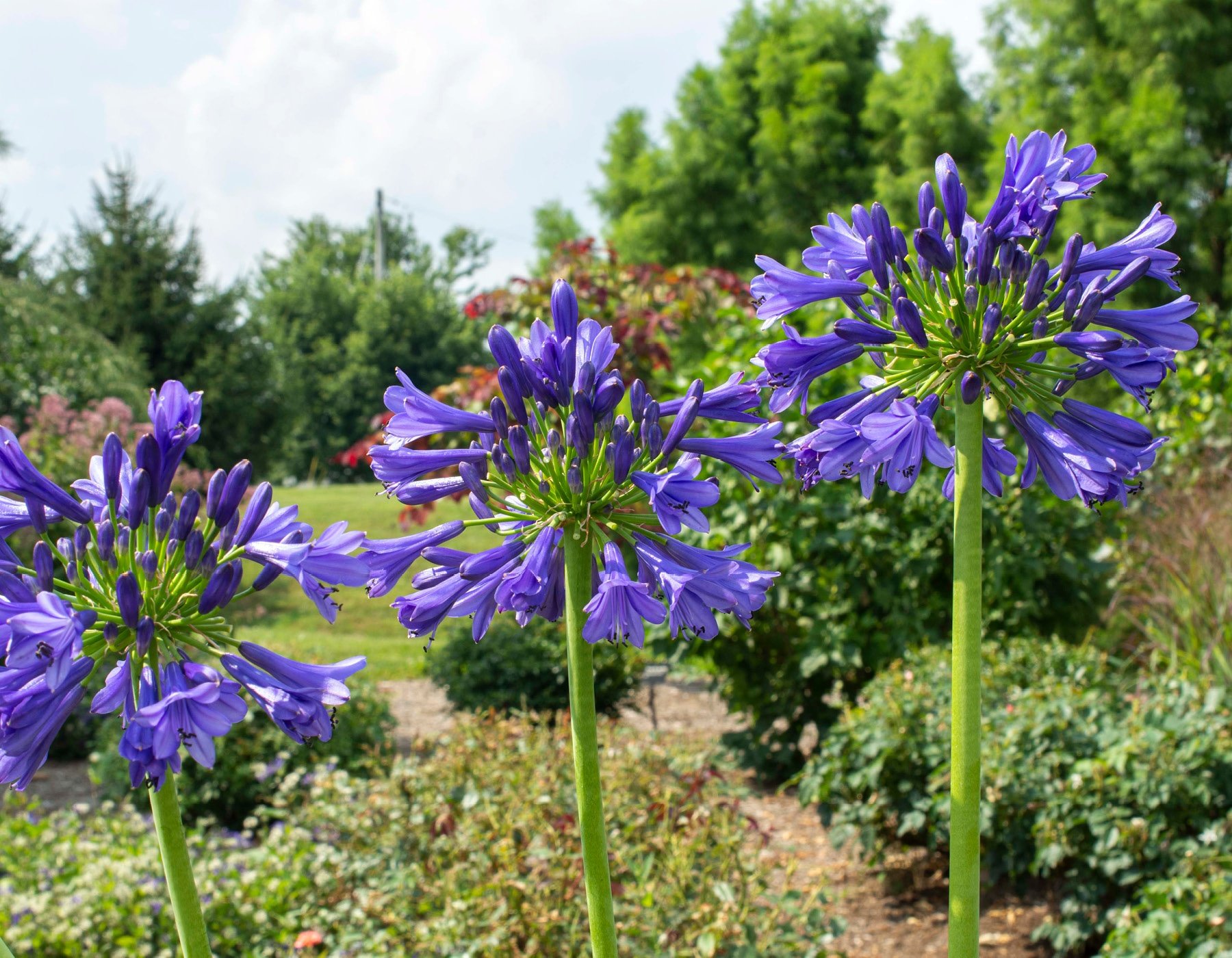Seasonal Agapanthus Care: Preparing for Winter and Summer season
Seasonal Agapanthus Care: Preparing for Winter and Summer season
Blog Article
Unleashing the Secret to Successful Agapanthus Growing: Idea for a Flourishing Yard
In the realm of horticulture, cultivating agapanthus efficiently requires a calculated strategy that includes various aspects of plant care. By understanding the nuances of agapanthus cultivation, one can create an atmosphere where these plants prosper and flower perfectly.
Growing Agapanthus: Ideal Practices
When growing Agapanthus, appropriate soil prep work is essential for making sure effective growth and advancement of these lovely blossoms. Agapanthus, frequently known as Lily of the Nile or African lily, flourishes in well-draining soil with a somewhat acidic to neutral pH degree - Agapanthus. Prior to growing, it is important to change hefty clay dirts with natural matter such as garden compost or peat moss to improve drain and give vital nutrients for the plants
To plant Agapanthus, pick a location that gets full sunshine to partial shade, as this will promote healthy and balanced growth and abundant blooming. Dig a hole two times the diameter of the plant's root round and put the Agapanthus at the same depth it was previously expanding. Carefully backfill the opening with soil, pushing down firmly to remove any kind of air pockets around the origins.
Water the freshly planted Agapanthus extensively and remain to maintain the soil uniformly wet, especially during the plant's active expanding period. Agapanthus. Using a balanced plant food once a month can even more sustain the plant's growth and flowering. By complying with these ideal techniques for planting Agapanthus, you can develop a spectacular display screen of these fascinating flowers in your garden
Perfect Dirt Issues for Agapanthus
For optimum growth and growing success of Agapanthus plants, ensuring the dirt problems are excellent is essential. Agapanthus prefers dirt that is abundant in nutrients, so incorporating a balanced plant food throughout the growing period can promote healthy and balanced development and dynamic blossoms.

Watering and Fertilizing Tips
To guarantee healthy and balanced growth and vibrant blooms, correct watering and feeding strategies are necessary for successful Agapanthus cultivation. Agapanthus plants benefit from regular watering, specifically during the expanding period.
When it comes to feeding Agapanthus, a well balanced fertilizer with equivalent components nitrogen, phosphorus, and potassium can be applied in the springtime to promote healthy growth and flowering. Slow-release fertilizers are ideal for offering nutrients gradually over a prolonged period. Avoid over-fertilizing, as this can result in too much vegetation development at the expense of flowers.
Additionally, integrating organic issue like compost into the dirt can improve nutrient degrees and improve dirt structure, helping in the total health and wellness of the Agapanthus plants. By following these watering and feeding tips, garden enthusiasts can look at here guarantee their Agapanthus plants flourish and produce stunning screens of flowers.
Pruning and Deadheading Techniques
Correct pruning and deadheading methods play a vital function in maintaining the health and aesthetics of Agapanthus plants, complementing the necessary practices of watering and feeding for successful cultivation. Pruning Agapanthus includes eliminating invested flower heads, yellowing or dead fallen leaves, and overall shaping of the plant to advertise much better growth. Deadheading, the process of eliminating discolored flowers, not just enhances the plant's appearance however additionally encourages more growing.
When deadheading Agapanthus, it is a good idea to clip off the blossom Learn More stem at the base using sharp, tidy shears. This process reroutes the plant's energy from seed manufacturing back into origin and vegetation growth, advertising a healthier and a lot more durable plant. Routine deadheading can prolong the flowering duration of Agapanthus and prevent self-seeding, which can cause overcrowding.
In regards to trimming, Agapanthus normally gain from a light trim after blossoming to clean up the plant and motivate fresh development. Reducing back the spent blossom stems and eliminating any kind of dead or broken vegetation assists maintain the plant's vigor and overall look. However, it is important to prevent cutting into the crown of the plant, as this can deteriorate its health and wellness.

Protecting Agapanthus From Pests and Diseases
Applying reliable pest and illness monitoring strategies is crucial to guarding the health and vitality of Agapanthus plants in cultivation. Agapanthus are generally sturdy plants, however they can still succumb different parasites and illness otherwise properly looked after. One common bug that impacts Agapanthus is the Agapanthus borer, a caterpillar that passages into the plant, triggering damage to the blossoms and fallen leaves. To stop problems, routine examination of the plants is vital. If borers are identified, they can be by hand gotten rid of, or insecticidal soap you could try here can be utilized as a control action.
In addition to parasites, Agapanthus are susceptible to diseases such as origin rot and fungal leaf spots. By remaining cautious and attending to insect and condition issues immediately, garden enthusiasts can aid their Agapanthus prosper and grow.

Final Thought
In verdict, successful farming of agapanthus calls for correct growing methods, perfect dirt problems, sufficient watering and feeding, routine pruning and deadheading, and protection from parasites and diseases. By adhering to these methods and suggestions, garden enthusiasts can make certain a flourishing yard full of stunning agapanthus blossoms. Agapanthus. Remember to preserve consistent care and focus to detail to promote the wellness and durability of these magnificent plants
When growing Agapanthus, appropriate dirt preparation is necessary for making certain successful growth and advancement of these beautiful flowers.Water the newly planted Agapanthus completely and proceed to keep the soil uniformly wet, particularly throughout the plant's energetic expanding season.For optimum development and flowering success of Agapanthus plants, making certain the dirt problems are suitable is essential. When growing or transplanting Agapanthus, ensure the soil is well-prepared to offer the necessary structure for the plants to establish themselves effectively. One typical insect that affects Agapanthus is the Agapanthus borer, a caterpillar that passages right into the plant, causing damage to the fallen leaves and blossoms.
Report this page